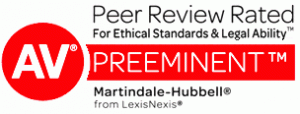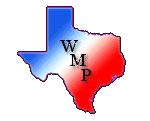ORDINANCE NO. 7). 91 AN ORDINANCE AMENDING CHAPTER 26 (MOTOR VEHICLES AND TRAFFIC) OF THE CODE OF CITY OF FORT WORTH (1964), AS AMENDED, BY AMENDING THE TOW-AWAY ZONES PROVIDED FOR IN SECTION 26-122 THEREIN; MAKING THIS ORDINANCE CUMULATIVE OF PRIOR ORDINANCES; REPEALING ALL ORDINANCES AND PROVISIONS OF THE FORT WORTH CITY CODE IN CONFLICT HEREWITH; PROVIDING A SAVINGS CLAUSE; PROVIDING A SEVERABILITY CLAUSE; PROVIDING A PENALTY; AND PROVIDING AN EFFECTIVE DATE. BE IT ORDAINED BY THE CITY COUNCIL OF CITY OF FORT WORTH, TEXAS: SECTION 1. subparagraph (b) of Section 26-1~2 of Division 3 of Article VI of Chapter 26 of the Code of the City of Fort Worth (1964), as amended, be and the same is hereby amended to read as follows: (b) Each of the following is designated ,as a tow-away zone, effective when notice of said zone is yiven by an official traffic–control device, and any vehicle unlawfully stopped, standing or parked in any such tow-away zone shall be removed in the manner and to the place provided by this chapter: (1) Second Street, from Houston Street to Taylor Street_ (2) Seventh Street from Lamar Street to ,Tones S tree t. (3) Sjxth Street, from Jones Street to Cherry Street. (4) Ti’lylor Street, from Second Street to Bel knar5 “-S treet. SECTION 2. That this ordinance shall be cumulative of all provisions of ordinances and of the Code of the City of Fort — ‘Vvolth (llHj4), as ;::lInl~nd(~d , affectjny motor v~hicles and traffic, except where the provisions of this ordinance ar e in direct conflict with the provisions of such ordinances an d such Code, In which event such conflicting provisions of such ordinances and such Code are hereby repea led. SECTION 3. ‘fhat all rights or remedies of the City of Fort Worth , Texas, Lire expressl y saved as to any and all violations of tile provisions of Chapter 26 of the Code of the City of Fort Worth (1964), as am~nded, and of any other ordinanc e affecting motor vehicles and traffic which have accrued at the time of the effective date of this ordinance; and, as to such accrued violations and all pending litigation , both civil and criminal, whether pending in court or not, under such chapter and/or other ordinances, same shall not be affected by this ordinance but may be prosecuted until final disposition by the courts. SECTION 4. That it is hereby declared to be the intention of the City Council that the sections, paragraphs, sentences , clauses and phr{}ses of this ordinance are severable, and if any phrase, clause, sentence, paragraph or section of this ordinance shall be declared void, ineffective or uncon~ tj tutionaJ. by the va lid judgment or final decree of a court of competent jurisdicticil, such voidness, ineffectiveness or unconstitutionality shall not affect any of the remaining phrases, clauses, sentences, paragraphs and sec -2 t ions of thj s urdinc-l[lce, SJ.nce the same would huve been enact ed by the City Council without the incorporation h~ rein of any such void , ineffect.i ve or unconstitu tional phras e , clause, sentence, paragraph or section . SECTION 5. Thut any pe r~Jon violCllinq any of the provisions of t~his ordinance shall be d(~ellled gui Ity of. a misdemeanor punishclbl e by Cl fine of not less tllCln one do llar ($1.00) nor more than two hundred dollars ( $200.00 ). SECTION 6 . ‘1’hat this ordinance shall Le in full force and effect from and after the date of its passage and publication, as required by luw, and it is so orda ined. ]’ I’ PROVED AS TO FOl~ AND LEGALlrry: s. G. Jul1ndroc, Jr. City Attorney ‘ :,../ /’ l ” ADOP’rED: EFFEC’I’IVE ” : _____ ________ _ .’ -3 … fILE HUMAN City of Port Worth, ‘Texas l/N I: SANTEInt_ BAILIFF ItIMES Mayor,and Council COlnmunication :\ IMBRO u”VI~ 1’1000 REfERENCE SUBJECT: PAGE ~~HE NUMBER Temporary Closing of Throckmorton lot _3_ LAJJ26/76 TE…..114 Str~et From Second To Weatherforc ———————~————~———-~ On June 23, 1975, ~ity Council approved the execution of ‘a consent agreement (M & C C-3119) to allow encroachments into public right-of-way as proposed for the Tandy Center and authorized the City Manager to execute a community facilities contract with the Tandy Corporation. A port~on of the encroachment into public right-of-way mentioned in that consent agreement is over and under Throckmorton Street between Weatherford Street and Second Street. Currently, plans call for the temporary closing of this sect;i,qn of Throckmorton Street to permit the construction of a basement across the public right-ofway. . Staff has worked closely with representatives of the Tandy Corporation to determine the work sequence, method of construction, and method of traffic handling during the construction of this portion of the Tandy Center Project. Temporary detouring of traffic during the construction period will be required. The proposed detour plan calls for traffic, northbound on T4rockmorton Street, to be detoured west on second street to Taylor and then north on Taylor Street to Weatherford and/or Belknap Streets. Southbound traffic, normally using Throckmorton Street, would be advised at Belknap Street to use alternate routes (alternate south bound routes include Houston Street and -Lamar Street). The proposed detour route has been thoroughly analyzed by Engineers employed by the Tandy Corporation and by the City’s Engineers. Through proper signing, barricading, pavement marking and advanced public information, the traffic ,disruption and congestion resulting from the detour will be minimized. The actual closing of Throckmorton Street is proposed from Sunday, February 1, 1976 for a period of approximately six months or until August 1, 1976. After considering many factors, the City Staff estinates that traffic can be successfully detoured, with a minimum of disruption and congestion, as described above during the s,ix month period, providing the following condi tions are met: 1. All barricades, detours and construction signs, ‘ as approved by the Traffic Engineering Department, are installed and maintained by the Tandy Corporation or its agents. 2. All work necessary to modify the traffic signal system, street lighting system, parking meters, regulatory signing, and pavement markings is performed by the City and paid for by the Tandy Corporation. The cost of this work is estimated to be $5,000. 3. Off duty policemen are furnished and paid by the Tandy Corporation for each week day (Monday through Friday) for one week immediately following the closing of Throckmorton Street at the intersection of Second and Throckmorton and the intersection of Second and Taylor. Police control shall be provided continuously from 7 a.m. until 6 p~m. during these days. , 1/26/76 DATE REFERENCE SUBJECT: PAGE NUMBER Temporary Closing of Throckmorton __ 2 3 TE-114 01 __ Street From Second To Weatherford 4. The Tandy Corporation shall provide conduit, per the City’s specifications, on their building above Throckmorton Street approximately 5 to 10 feet south of the south curb line of Weatherford Street to provide for the installation of a traffic control signal. This conduit shall be provided with a continuous wireway between the approved traffic signal head attachment point on the building and the City’s underground electrical service located on the southwest corner of Throckmorton and Heatherford Street. 5. Tandy Corporation or its authorized agent shall provide temporary partial barricades with appropriate “detour ahead” signing on Throckmorton Street inunediately south of Belknap. 6. Tandy Corporation or its authorized agent shall provide a temporary full barricade with appropriate detour signing for south bound traffic on Throckmorton Street immediately south of Weatherford Street. 7. The Tandy Corporation or its authorized agent shall provide a temporary partial or full barricade with appropriate detour signing for north bound traffic at Throckmorton and Second Streets. 8. The Tandy Corporation shall provide and install, at no cost to the City, traffic signal conduits conforming to City specifications along the west side of Throckmorton Street between Second Street and First Street. This conduit is for possible future traffic signal interconnect. 9. The Tandy Corporation shall, at no cost to the City, provide and install traffic signal conduit across three approaches to the intersection of First and Throckmorton for a possible future pedestrian crossing signal. 10. The Tandy Corporation agrees to minimize traffic disruption, particularly during peak traffic hours (i.e. 7 a.m. – 9 a.m.; 4 p.m. – 6 p.m.), which may result from hauling excavated materials from the job site or hauling building materials and merchandise to the job site. Special consideration shall be given to the delivery of merchandise to the loading docks located on the northeast corner of Second and Taylor Streets. PARKING RESTRICTIONS AND TOW AWAY ZONES Due to the large volume of traffic that must be detoured, the number of buses presently utilizing Throckmorton Street, and recognizing that illegally parked vehicles would cause severe detriment to the proposed detour, Staff proposes to designate the following sections of streets as “towaway zones” for that period of time which Throckmorton Street is closed: 1. Second Street beLWeen Houston Street and Taylor Street 2. Taylor Street between Second Street and Belknap Street
Williams, McClure & Parmelee is dedicated to high quality legal representation of businesses and insurance companies in a variety of matters. We are experienced Texas civil litigation attorneys based in Fort Worth who know Texas courts and Texas law. For more information, please contact the law firm at 817-335-8800. The firm’s new office location is 5601 Bridge Street, Suite 300, Fort Worth, Texas 76112.

![texas[2]](https://texasdefensecounsel.com/wp-content/uploads/2014/02/texas2.gif)
